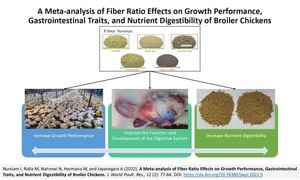India is poised for another significant year of sugar exports, with government forecasts indicating favorable conditions for farmers and increased production. According to Ashwani Srivastava, the joint secretary at India’s food ministry, expectations are high following good weather patterns, leading to what he termed a "bumper sugar cane crop" for the next season. Speaking at the Dubai Sugar Conference, Srivastava emphasized, "All indications are we’ll have a bumper sugar cane crop next year." This sustained agricultural output will keep India firmly within the global export market.
The country, which is the world’s second-largest producer of sugar, had previously permitted mills to ship 1 million tons of sugar starting from October this season, following restrictions which curtailed exports over the prior year. While this year's output is expected to be below expectations due to factors like early flowering and disease, industry leaders anticipate recovery as conditions improve for subsequent seasons. Niraj Shirgaokar, vice president of the Indian Sugar & Bio-energy Manufacturers Association, noted, "A good closing balance will see more exports coming out in 2025-26 for sure compared to this year." Given India’s significant contributions to sugar supply, continued shipments could affect global prices, which have already seen declines of around 20% over the last year.
Meanwhile, the dynamics of plastic exports from the U.S. have shifted considerably. According to trade data recently released by the U.S. Census Bureau, exports of reclaimed plastic scrap fell by about 2% to 903 million pounds for the year 2024. This decline highlights changing global markets, particularly as the U.S. transitions to being a net importer of plastic materials, with imports reaching record figures of 1.085 billion pounds. The primary sources of these imports were Canada and Mexico, which together accounted for more than half of the incoming materials. This trend shifts the U.S. away from its historical reliance on external markets for recycling, as complications arise due to stringent regulations elsewhere.
The situation also leads to greater interest and investment in domestic recycling capacities, as U.S. companies adapt to these changes. By resin type, polyethylene (PE) was the dominant export material, comprising 32% of exports, with polyethylene terephthalate (PET) and other plastics closely trailing.
On the international stage, Trigon Pacific Terminals is moving forward with initiatives to solidify Canada’s position as a key player in the hydrogen economy. Signing a memorandum of Understanding with South Korea, Trigon aims to develop infrastructure for ammonia export, which serves as both a carrier for hydrogen and part of Canada’s broader strategy to reduce carbon emissions. Rob Booker, CEO of Trigon, stated, "Trigon has been actively advancing development of a Canadian west coast export corridor for the shipment of hydrogen-as-ammonia from Canada to global markets." This reflects the growing demand for clean energy sources, particularly from countries like South Korea and Japan, where energy production methods are increasingly tied to international collaboration.
Lastly, Canada is setting its sight on achieving record beef export values, with predictions pointing to over $7 billion for 2024. Albert Eringfeld, vice president of export market development for Canada Beef, highlighted the upward trend not just in value but also the volume of live cattle and beef exports. Notably, just under half of all beef slaughtered—approximately 46%—is expected to head to international markets. Eringfeld noted, "There are actually 56 different countries... where Canadian beef was exported." Major markets for Canadian beef include the United States, Japan, South Korea, and Vietnam, each providing unique challenges and opportunities for trade.
Market actions are being shaped by various factors, including shifts to tariff-free arrangements under trade agreements which are anticipated to boost beef export competitiveness. Ongoing consultation with trade partners is necessary as Canada faces stiff competition from countries like Australia and Brazil, who are also strong players in the beef export market.
These developments reflect broader trends across global commodity exports, particularly the adaptations nations are making to capture new markets. Sustainability and climate goals increasingly dictate trade directions, pushing producers to innovate and respond to both domestic and international demands effectively.



